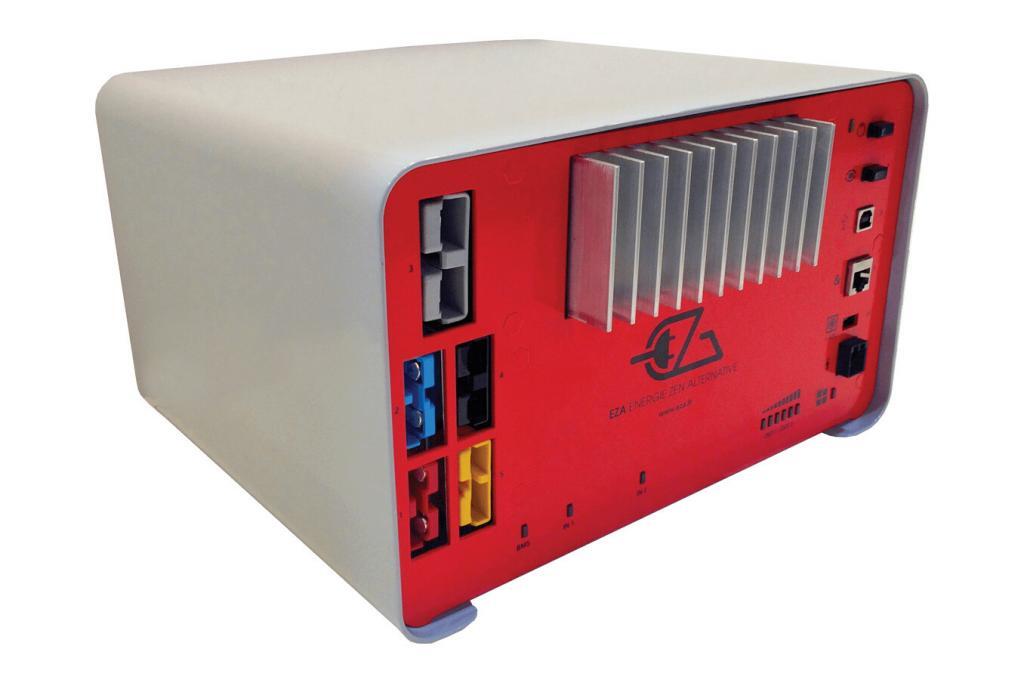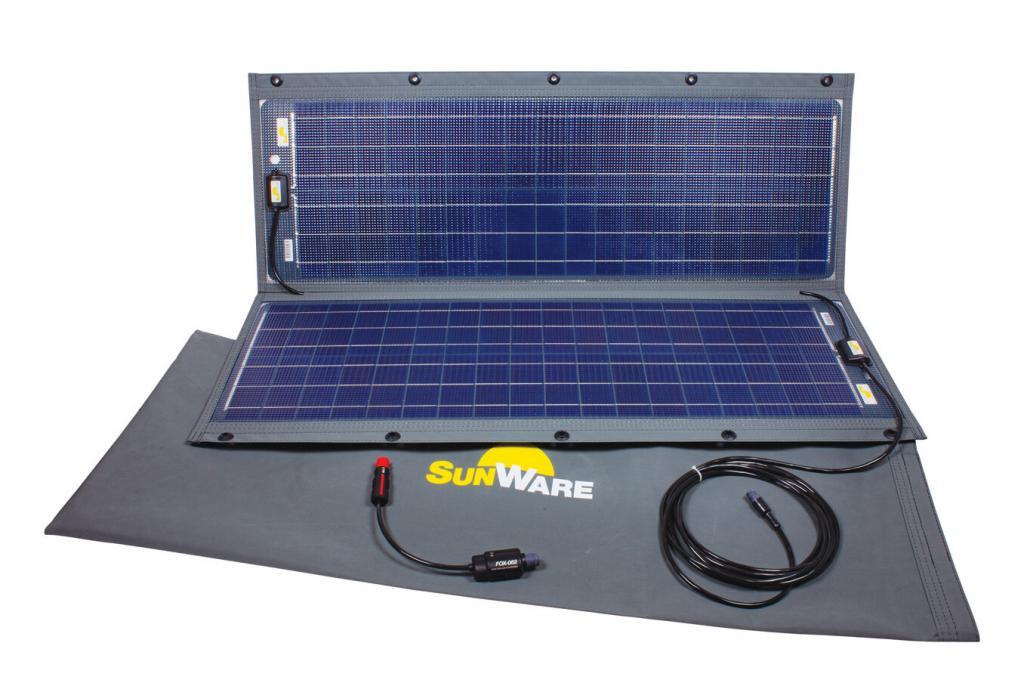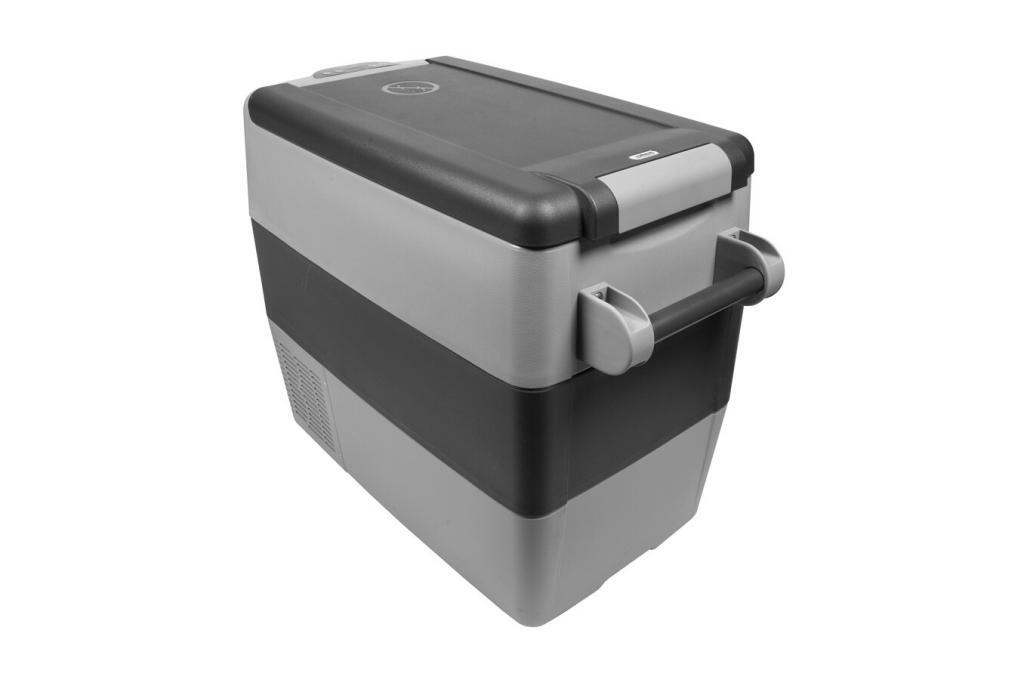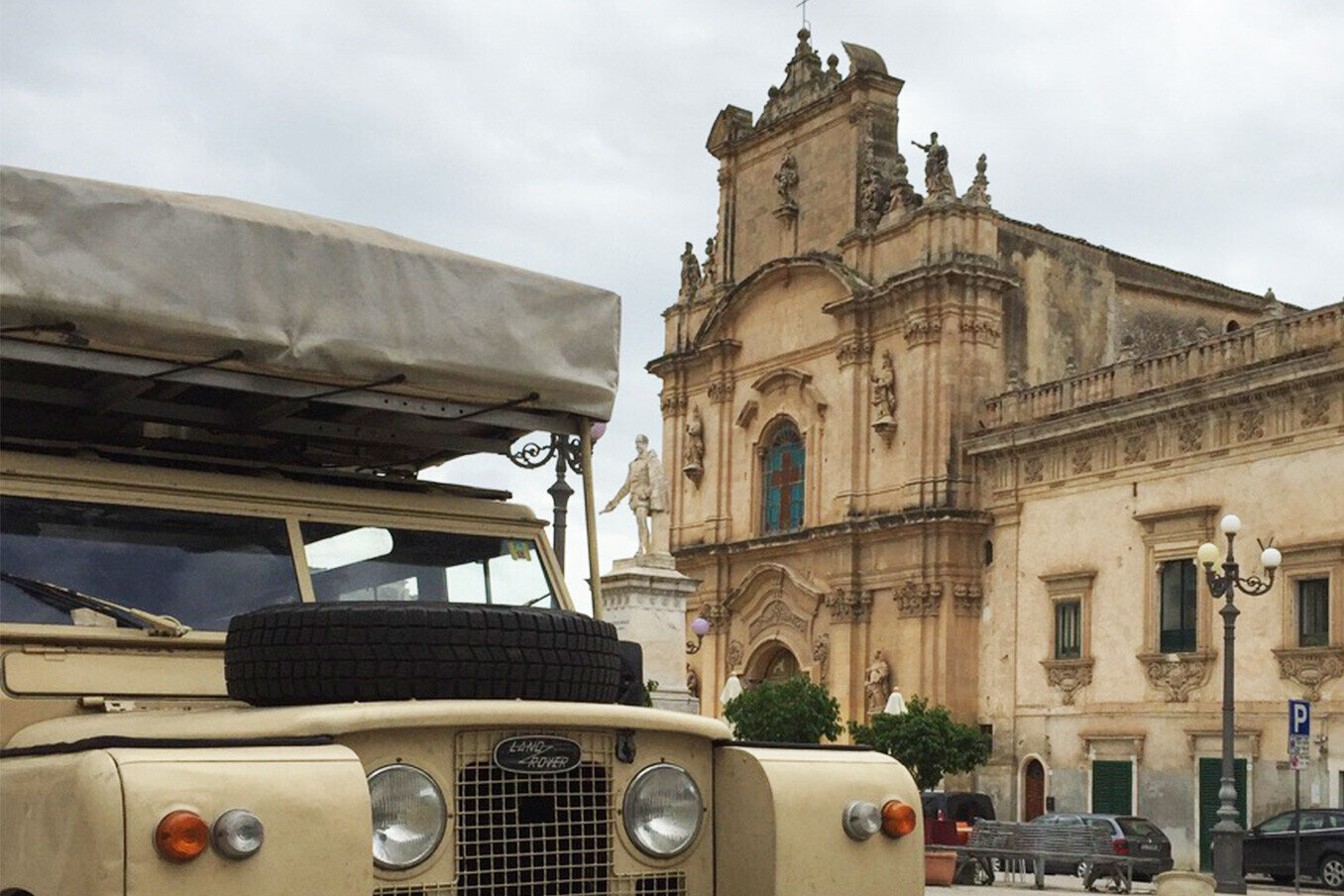On a hot day, it’s nice to be able to reach in and pull a cool, refreshing drink out of the onboard fridge. It’s even more comforting knowing the fridge is powered by an electrical circuit isolated from the starter battery, so that I can rest assured the car will start again in a few days time. You see, one of the burdens we happily endure as we explore remote locations is staying off grid for a few days whilst we work in remote locations. Consequently, I need a reliable electrical supply to keep my work tools—computer, camera, phone, and tablet—fully charged, so as not to have to resort to hooking hte vehilce up to the mains on a campsite every few days.
Last year, I looked at different ways to configure an autonomous electrical system for Larry, my 1963 Land Rover Series IIA 109 Station Wagon. The goal: a self-contained lithium battery system to maintain my work efficiency, power a refrigerator and interior lighting, support water filtration, and possibly provide enough 230V for a small power tool. Recharging the battery should be flexible: via the alternator when driving; from a 230V socket when stationary; or a solar panel for full autonomy. The system needs to be simple to install and maintain.
After much deliberation, I settled upon a minimalist solution. The heart of the system is made up of two units—EZA 80 and Votronic SMI 1700 ST-NVS.
EZA 80 POWER PACK
Designed in France and already enjoying popularity amongst the French caravan and mobile home community, EZA are steadily making a name for themselves in other countries across Europe. The concept first caught my attention because the Lithium Iron Phosphate (LiFePO4) technology battery, solar regulator, 12V charger, switching electronics to detect the inbound power source, and circuitry for an external inverter are all packaged into a compact metal case measuring 300x260x180 mm and weighing 17 kg. Its size makes it ideal to hide in my tailor-made centre console—or even under the passenger seat of some vehicles.

Connecting the EZA 80 to the car electrical system is easy, requiring a cable with the correct cross-section (respective its length) from the positive terminal of the starter battery, another to the chassis, and a third wire leading to the D+. The latter does not exist in a 1963 Land Rover, so I connected it to the positive terminal of the 12V 2-pin socket in the dashboard which is only powered when the ignition is on. The reasoning behind this is that as long as the ignition is turned off, EZA doesn’t receive a signal for its internal battery to draw a current from the starter battery, thereby providing me the reassurance Larry will always start when needed—regardless of how long I have been off-grid and making use of the on-board amenities. All external connections are industrial standard and colour coded, so you cannot mistakenly connect things that do not belong together.
My charging requirements are satisfied in full: on the road, the charge is drawn from the alternator; when stationary, I can choose between the integrated 230V charger or a solar panel. Features I have grown to appreciate include fast charging, battery stability, minimal discharge when not in use, and the simple plug-and-play installation. Another benefit of the system is the ability to daisy-chain up to four units to increase power reserves.
€2,540 (INCL. VAT) | EZA
VOTRONIC SMI 1700 SINUS ST-NVS INVERTER
Tucked into the base of the centre console, is the Votronic SMI 1700 Sinus ST-NVS inverter which supplies 230V and 1700W of power (3000W peak on start up). Dimensions are 265x90x440 mm, and it tips the scales at 5,200 g. Being hidden away could imply it is out of sight and out of mind, but the detachable front panel can be mounted elsewhere in the cabin as a remote control; five meters of connecting cable are included.

This advanced switch mode inverter represents state-of-the-art technology, designed and manufactured in Germany. The well-balanced and speed-regulated fan permits prolonged use without being intrusive; integrated protective, microprocessor-controlled circuits ensure sensitive equipment cannot be damaged by sudden surges. To help prevent unnecessary battery drain, the inverter has two useful functions: firstly, it can be set to automatically switch to standby mode when not in use; secondly, the mains priority control detects an external mains power supply and disconnects the inverter completely until the external supply is disconnected when it will automatically engage again.
Votronic developed SMI 1700 Sinus ST-NVS for deployment in intervention and special purpose vehicles, including overland cars and trucks, so I am not exposing it to unusual distress with Larry’s leaf springs and off-pavement travel. I don’t have, or need, a 2000W induction cooker, so the stable 230V/1700W are more than adequate for my overland home office requirements.
€886 | VOTRONIC
SunWare RX-22052 100 Wp SOLAR PANEL
In 2018, we cut our teeth on the SunWare RX-21052 50 Wp solar panel and found the design and function to be reliable and robust. However, with more equipment on board and an estimated daily consumption of 40-50 Ah, I upgraded to the 100 Wp folding panel for my 80 Ah LiFePO4 battery. I remain adamant that I do not wish to have a permanently mounted panel on the roof because I need to be able to park the car in the shade during the day.

As mentioned before, the EZA 80 is already configured with a solar regulator making the one supplied by SunWare potentially superfluous. However, I quickly learned to appreciate its merits in the past and the integrated LED helps position the panels for optimum performance—not forgetting, the latest generation product has a separate setting for LiFePO4 batteries.
The EVA laminate and ETFA coatings provide the multi-crystalline cells excellent protection against the elements and travel-related wear and tear; the sturdy fabric surround with eyelets for hanging on racks or branches, and the connection box fixed to the panel with stainless screws (as opposed to an adhesive) are all indicators of a durable product whose heritage lies amongst yachting crews with a keen eye for reliability when their lives depend upon it.
€1,198 (INCL. VAT) | SUNWARE
WATER-JACK FRESH TINY
Series Land Rovers and Defenders are not endowed with endless storage space inside and carrying large quantities of water on the roof is a no-no. So, to ensure there is a continuous supply of potable water, I carry the water-jack fresh tiny manufactured by Famous-Water. This is one of the smallest units for mobile application in their comprehensive range of filtration sets, particularly designed for overland vehicles. The tiny is installed in an aluminium Zarges box, which can be safely stowed on the roof, occupying little more than the space of two six-packs of water (but weighing 50% less) and able to replenish countless bottles and tanks with water free of bacteria and unpleasant odours from the any river or lake, regardless of how cloudy and unpalatable the source may appear.

The water-jack tiny comprises a 12V pump equipped with 3 m of spiral cable and a plug for a 12V socket, two filter housings for either one ceramic element (the second housing remains empty) or one each of ceramic and active carbon, and three hoses: one approx. 5 m with a coarse pre-filter to drop in the river or lake and a snap connection to the pump; the second approx. 2 m to fill bottles or tanks and connecting to the filter exit; the third approx. 40 cm with a snap connector for the filter on one end and a Gardena fitting to bypass the pump if you want to filter water from a tap or other pressurised source. Abrasive pads and paper for cleaning the filter elements, a gauge to measure filter wear, and a padlock complete the well-equipped unit. The bacteria elements can filter up to 50,000 litres of water, and the optional active carbon filter can last for 16,000 litres. The pump has a flow rate of 240 litres per hour at 2.7 bar with the bacteria filters attached, and 120 litres with the bacteria and carbon filter combination.
Joachim and Sonja, the proprietors of Famous-Water, are enthusiastic overlanders themselves and have developed their filter systems based upon hands-on experience, employing only premium quality components for longevity and reliability such as the Katadyn filter elements which are installed into their own custom-made housings.
Being able to spontaneously prolong a stay in picturesque surroundings without having to head to the next store to stock up on bottled water is a luxury, but travelling through North Africa and maintaining a personal reserve of bacteria-free water is a necessity. Added bonus: Every time we refill our own bottles and tank means we are making a small contribution to protect the environment.
FROM €1,070 | FAMOUS WATER
ISOTHERM TRAVEL BOX TB 51 COOLER
The final household component in my Overland Home Office is the Isotherm Travel Box TB 51 cooler. As a comparison, I have had Webasto refrigerators in the past, but the limited volume capacity rendered them only useful for short breaks, so an upgrade was inevitable for extended travel.

The Isotherm TB 51 is a compressor unit capable of swallowing 49 litres of food and drinks, including 1.5 litre bottles when they are standing. Inside, there are two compartments, a removable basket, and an LED light. The lid is sturdy and the locking mechanism closes securely. The control panel is conveniently positioned on the top at the rear and simple to operate.
The integrated Secop converter allows the Travel Box to be connected to 12/24V and 115-230V. I appreciate being able to take it out of the car and hook it straight up to the mains without having to use a transformer. The compressor quickly draws the temperature down and an electronic thermostat maximises efficiency and minimises power consumption. The TB 51 measures 530x700x350 mm and weighs 20 kg. There is a well dimensioned carrying handle at each end of the unit, and the optional mounting kit secures it behind the front passenger seat thereby providing easy access from inside as well as through the passenger door when we are outside.
€892 | INDELWEBASTOMARINE




